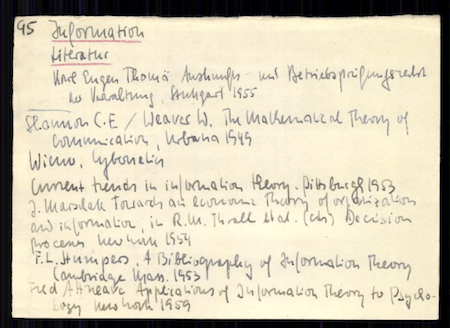Zettelkasten, a method for note-taking
Having a repository for the things you learn is more relevant than ever. Facts can be easily checked using the internet. However, the process of connecting ideas, and formulating relevant questions, comes from deep reading and reflection.
Last weekend I discovered a method for note-taking called Zettelkasten. This method was devised by German sociologist Niklas Luhmann, who used it as an aid in his research throughout his life1. For context, during his life Luhmann published more than 70 books and 400 scholarly articles on various subjects. Luhmann referred to his Zettelkästen as his zweites Gehirn, his second brain2.

